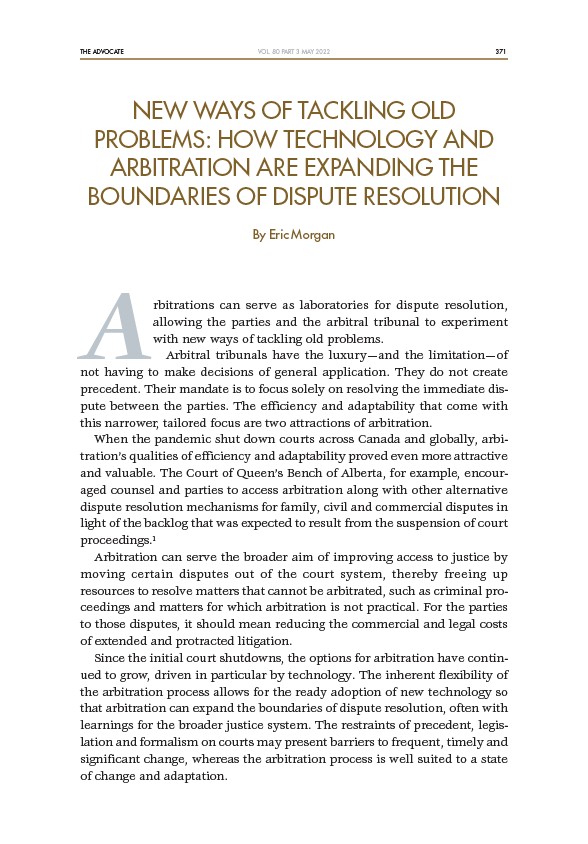
THE ADVOCATE 371
VOL. 80 PART 3 MAY 2022
NEW WAYS OF TACKLING OLD
PROBLEMS: HOW TECHNOLOGY AND
ARBITRATION ARE EXPANDING THE
BOUNDARIES OF DISPUTE RESOLUTION
By Eric Morgan
Arbitrations can serve as laboratories for dispute resolution,
allowing the parties and the arbitral tribunal to experiment
with new ways of tackling old problems.
Arbitral tribunals have the luxury—and the limitation—of
not having to make decisions of general application. They do not create
precedent. Their mandate is to focus solely on resolving the immediate dispute
between the parties. The efficiency and adaptability that come with
this narrower, tailored focus are two attractions of arbitration.
When the pandemic shut down courts across Canada and globally, arbitration’s
qualities of efficiency and adaptability proved even more attractive
and valuable. The Court of Queen’s Bench of Alberta, for example, encouraged
counsel and parties to access arbitration along with other alternative
dispute resolution mechanisms for family, civil and commercial disputes in
light of the backlog that was expected to result from the suspension of court
proceedings.1
Arbitration can serve the broader aim of improving access to justice by
moving certain disputes out of the court system, thereby freeing up
resources to resolve matters that cannot be arbitrated, such as criminal proceedings
and matters for which arbitration is not practical. For the parties
to those disputes, it should mean reducing the commercial and legal costs
of extended and protracted litigation.
Since the initial court shutdowns, the options for arbitration have continued
to grow, driven in particular by technology. The inherent flexibility of
the arbitration process allows for the ready adoption of new technology so
that arbitration can expand the boundaries of dispute resolution, often with
learnings for the broader justice system. The restraints of precedent, legislation
and formalism on courts may present barriers to frequent, timely and
significant change, whereas the arbitration process is well suited to a state
of change and adaptation.